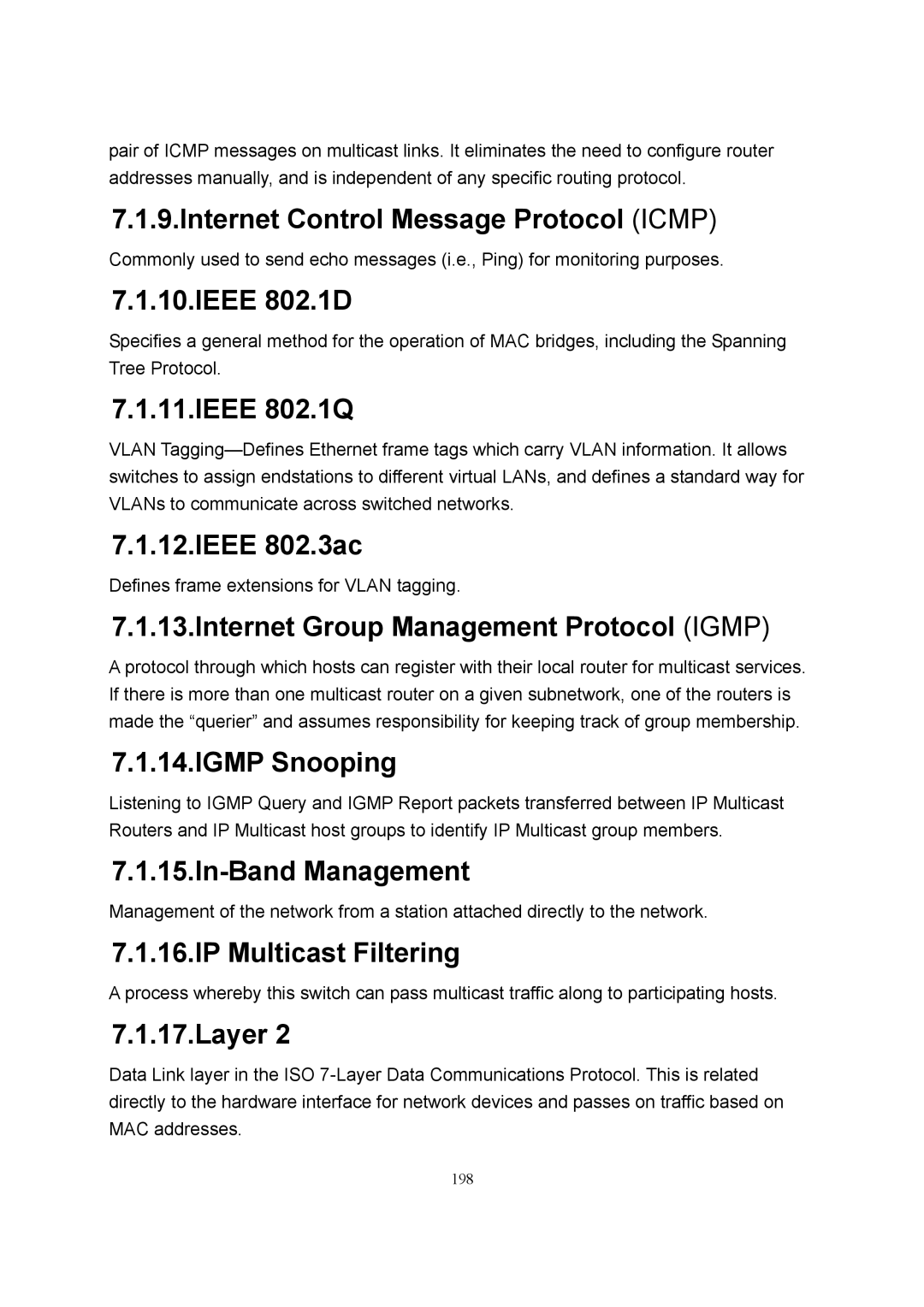pair of ICMP messages on multicast links. It eliminates the need to configure router addresses manually, and is independent of any specific routing protocol.
7.1.9.Internet Control Message Protocol (ICMP)
Commonly used to send echo messages (i.e., Ping) for monitoring purposes.
7.1.10.IEEE 802.1D
Specifies a general method for the operation of MAC bridges, including the Spanning Tree Protocol.
7.1.11.IEEE 802.1Q
VLAN
7.1.12.IEEE 802.3ac
Defines frame extensions for VLAN tagging.
7.1.13.Internet Group Management Protocol (IGMP)
A protocol through which hosts can register with their local router for multicast services. If there is more than one multicast router on a given subnetwork, one of the routers is made the “querier” and assumes responsibility for keeping track of group membership.
7.1.14.IGMP Snooping
Listening to IGMP Query and IGMP Report packets transferred between IP Multicast Routers and IP Multicast host groups to identify IP Multicast group members.
7.1.15.In-Band Management
Management of the network from a station attached directly to the network.
7.1.16.IP Multicast Filtering
A process whereby this switch can pass multicast traffic along to participating hosts.
7.1.17.Layer 2
Data Link layer in the ISO
198
